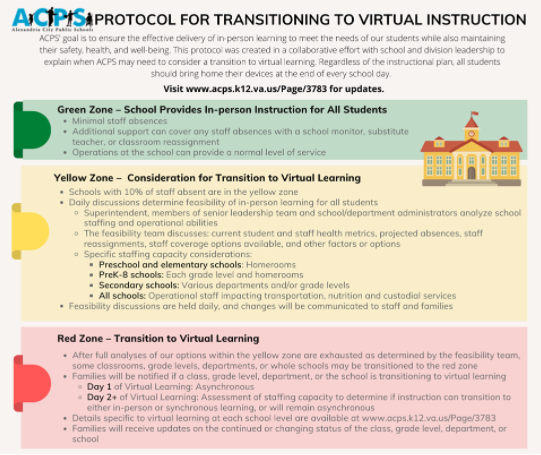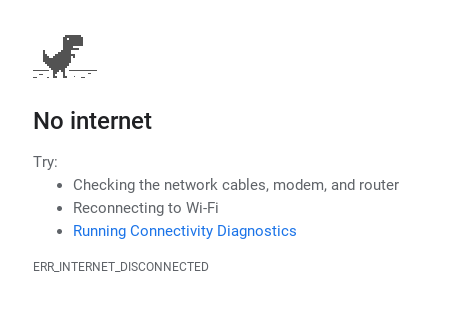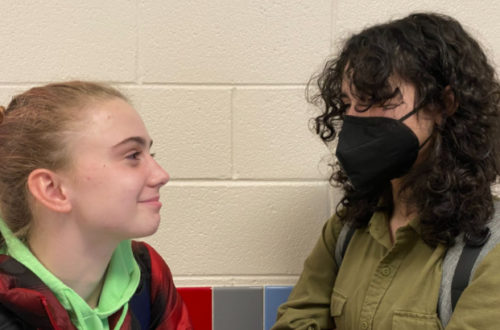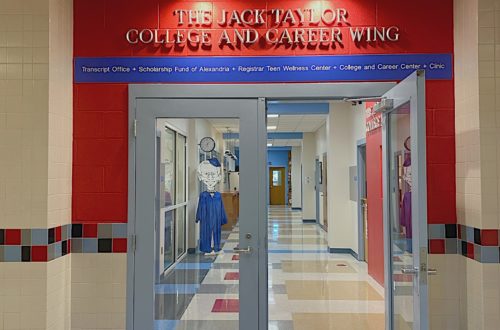ACPS Shares Their Metrics for Virtual Learning
Katie Vastola and Moira Sirois
Editor and Staff Writer
After winter break, ACPS released its protocol for transitioning to virtual learning. Rather than have the entire district go virtual, it outlines plans for when specific grades or schools may need to go virtual for a period of time.
According to the Protocol for Transitioning to Virtual Learning webpage, the “protocol was created in a collaborative effort with school and division leadership team members.” The metrics are based less on student absences and more on staff absences and lack of resources.
Because the metrics take into account specific classes, entire schools may not need to go virtual. In preschool and elementary schools, only specific homerooms may be transitioned to virtual. In PreK-8 schools, it could be only individual homerooms or specific grade levels that need to go virtual. In secondary schools, they consider virtual learning by department and/or grade levels.
Their plan again reminds students to bring home their chromebooks every day in case of virtual learning and outlines when schools are considered to be in the green, yellow, or red zones. Metrics that are considered include “employee group” absences, like bus drivers, nutritional staff, and teacher absences.
Junior Anna Huber-Wilker said that while she feels the criteria for transitioning to virtual is good, it “seems like it can be a very last minute [decision] that will affect a lot of families.”
Schools are considered to be in the green zone (defined as “school provides in-person instruction for all students”) when there are minimal staff absences and there is enough additional support to cover any existing staff absences. At this stage, school operations can continue as normal and no transition discussions need to happen.
The yellow zone is defined as consideration for transition to virtual learning. Schools are moved to the yellow zone when 10% of staff is absent. At this level, “daily discussions determine [the] feasibility of in-person learning for all students.” These discussions involve the superintendent, school/department administrators, and members of the senior leadership team analyzing staffing and operational abilities. Specific staffing capacities are considered for each “type” of school, i.e. elementary, preK, and secondary schools.
When schools, grade levels, or specific departments are placed in the red zone, they are transitioned to virtual learning. Day one of virtual learning will be asynchronous, and days two and beyond will have an assessment of staffing capacity to determine whether synchronous instruction is possible, or whether asynchronous instruction will continue. Essentially, it will be determined on a day-by-day basis whether instruction will be synchronous or not.
Sophomore Owen Henderson is not worried about the potential of going virtual for a brief period of time if needed. He said, “I enjoyed virtual school last year and some of my teachers would be able to transition easily.”
Senior Lainey Eveges feels different about the situation: “I like being around other students and being in the in-person learning setting. Virtual learning is difficult for me to pay attention to and makes it hard to stay upbeat.”
While there are many opinions about backup plans for returning virtual, many teachers have set up their lesson plans to transition if needed. Huber-Wilker said, “I have some classes that are already self-paced, so going virtual will not change them too much.”






